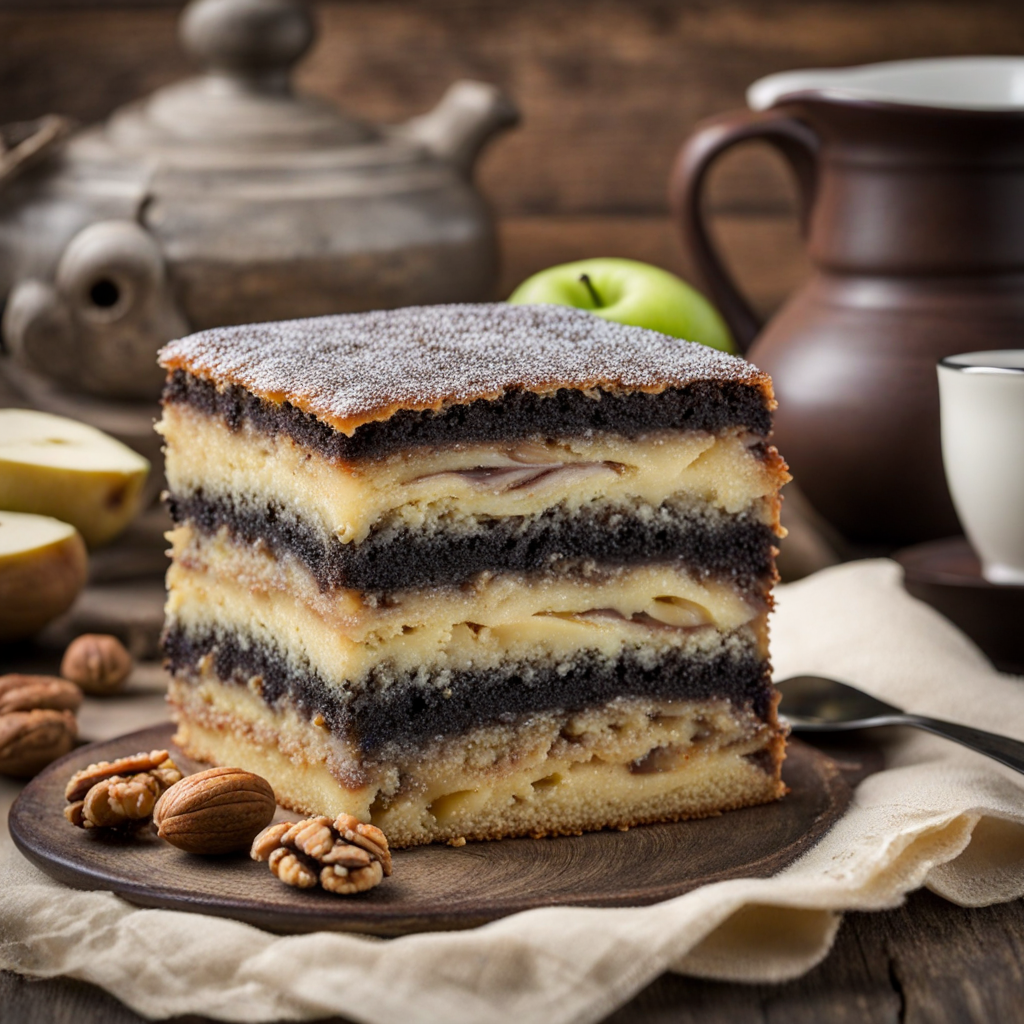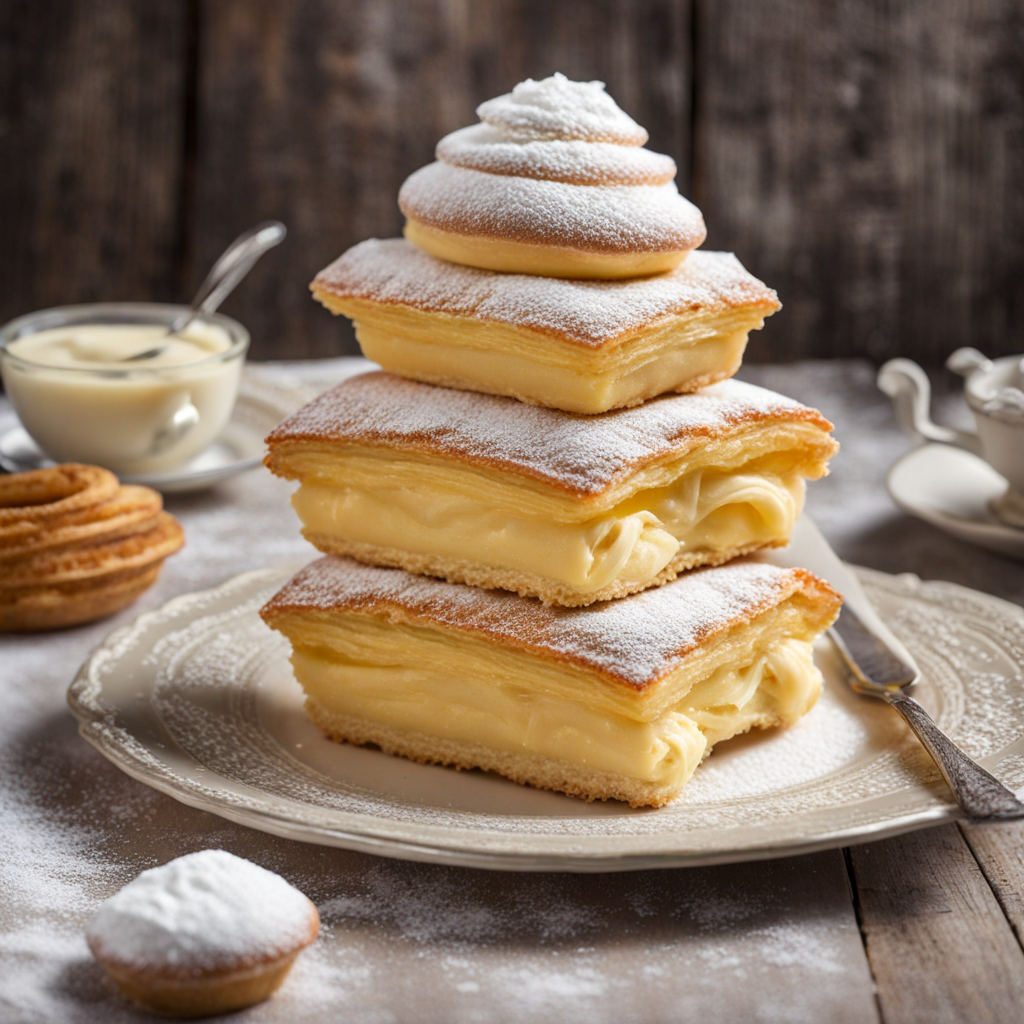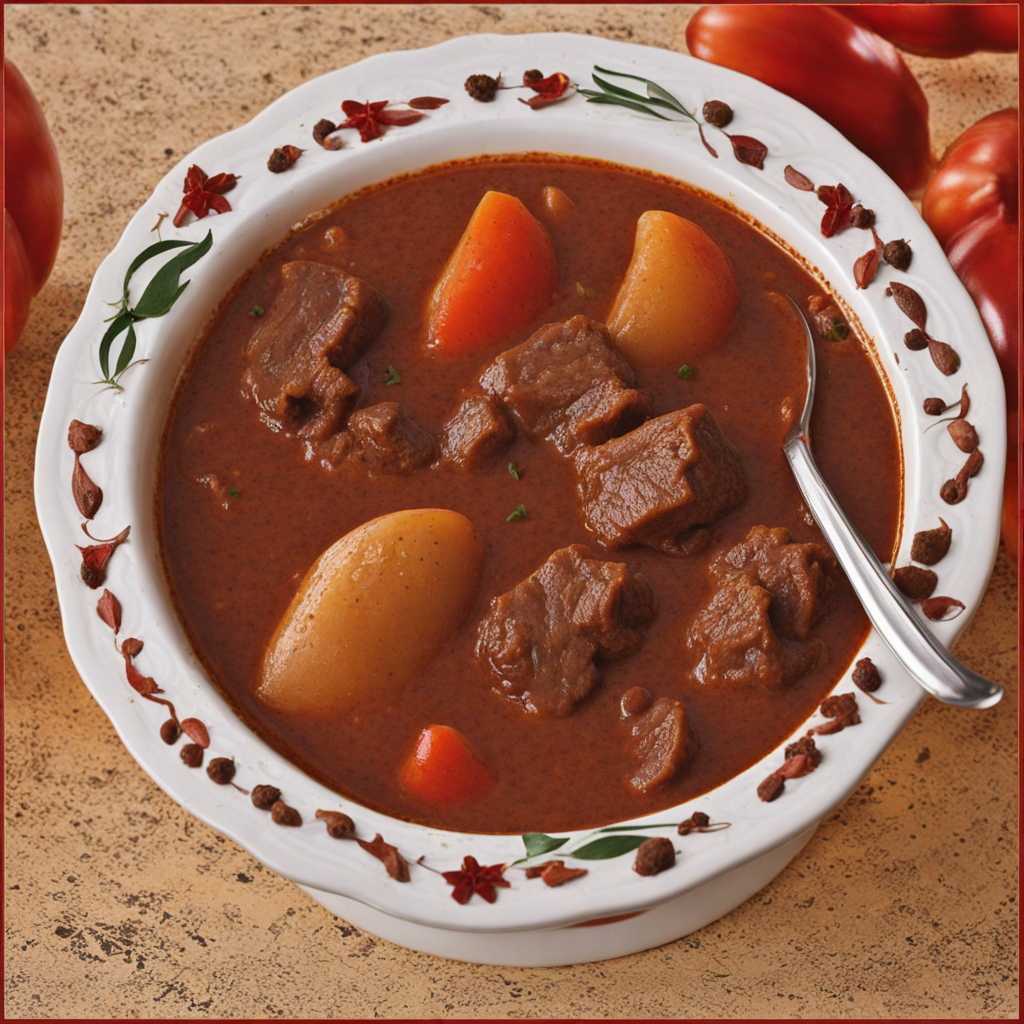Flódni
Flódni is a traditional Hungarian pastry that showcases the rich and diverse flavors of Central European baking. This layered dessert is a delightful combination of thin, flaky dough and a variety of sweet fillings, making it a true feast for the senses. The crust is typically made from a rich dough that provides a satisfying crunch, while the interior boasts a medley of fillings that can include poppy seeds, walnuts, apples, and sweetened cottage cheese. Each layer is prepared with care, ensuring that every bite delivers a harmonious balance of textures and flavors that is both comforting and indulgent. What sets Flódni apart is not just its delicious fillings but also the way these ingredients come together to tell a story. Each filling represents a different aspect of Hungarian culinary heritage, from the earthy notes of poppy seeds to the freshness of apples, all harmoniously layered to create a pastry that is as beautiful as it is delicious. The sweetness is often complemented by a hint of spice, such as cinnamon or vanilla, adding complexity to each mouthful. The result is a dessert that feels both rustic and refined, making it perfect for both everyday enjoyment and special occasions. When served, Flódni is typically dusted with powdered sugar, enhancing its visual appeal and inviting you to take a bite. It's often enjoyed with a cup of coffee or tea, making it an ideal companion for afternoon gatherings or festive celebrations. The experience of savoring Flódni is not just about taste; it’s a journey through Hungary's rich culinary landscape, offering a unique taste of tradition and warmth that is sure to delight anyone looking to explore new flavors.
How It Became This Dish
Flódni: A Sweet Testament to Hungarian Culinary Heritage Flódni, a rich and complex pastry, embodies the intricate tapestry of Hungarian culinary history. This layered cake, filled with a medley of flavors, serves not only as a dessert but also as a symbol of cultural convergence and resilience within Hungary's diverse population. Its origins, evolution, and cultural significance reflect the broader historical narratives of the region, making Flódni a culinary artifact worthy of exploration. Origins Flódni traces its roots to the Jewish communities of Hungary, particularly in Budapest, where it gained prominence in the late 19th and early 20th centuries. The cake is said to have been influenced by the culinary traditions of Eastern European Jews, particularly those from the Austro-Hungarian Empire. The name "Flódni" itself is derived from the Yiddish word "flad," which means "layer," a fitting description for this multi-layered confection. The traditional Flódni consists of a variety of fillings, typically including poppy seeds, walnuts, apples, and a sweetened cheese mixture, all encased in a thin, flaky pastry. This layering not only creates a delightful textural experience but also symbolizes the diverse influences that shaped Hungarian cuisine. The Jews of Hungary contributed significantly to the culinary landscape, interweaving their traditions with those of their non-Jewish neighbors. This blending of cultures is particularly apparent in Flódni, which showcases both Jewish baking techniques and Hungarian flavors. Cultural Significance Flódni is more than just a dessert; it carries deep cultural significance. In Jewish tradition, certain foods are imbued with spiritual meaning, often shared during significant life events and holidays. Flódni has made its mark in the context of Jewish celebrations, particularly during the festive season of Purim and other family gatherings. The cake's rich fillings and elaborate preparation speak to the importance of hospitality and the joy of sharing food with loved ones. In addition, Flódni serves as a symbol of resilience and adaptability within the Jewish community in Hungary. Throughout history, Jews in Hungary faced various challenges, including periods of persecution and displacement. Yet, they have preserved their culinary traditions, adapting recipes and techniques to survive and thrive in a changing world. Flódni stands as a testament to this enduring spirit, celebrating cultural heritage while also embracing the influences of the broader society. Development Over Time As Hungary underwent significant political and social changes in the 20th century, so too did Flódni. The cake's popularity spread beyond Jewish communities, becoming a beloved treat among the wider Hungarian population. This shift reflects broader trends in food culture, where ethnic foods often transcend their origins to become part of the national culinary identity. During the interwar period, Flódni gained recognition in cafés and patisseries across Budapest. The cake was often featured in elaborate displays, showcasing the artistry of Hungarian pastry chefs. It became a staple in celebrations, weddings, and family gatherings, further embedding it in the national consciousness. The post-World War II era saw a resurgence of interest in traditional Hungarian cuisine, as people sought comfort in familiar flavors in the wake of hardship. Flódni, with its rich history and indulgent taste, found a renewed place in the hearts and homes of many. The late 20th and early 21st centuries brought about a culinary renaissance in Hungary, characterized by a revival of traditional recipes and techniques. Chefs and home bakers alike began to explore and reinterpret classic dishes, including Flódni. Variations emerged, with some bakers experimenting with different fillings or incorporating modern techniques into their preparations. This creative evolution highlights the cake's versatility and its ability to adapt to changing tastes while remaining rooted in tradition. Modern Day Flódni Today, Flódni is celebrated not only in Hungary but also among Jewish communities worldwide. Food festivals, cultural events, and family gatherings often feature this iconic cake, serving as a delicious reminder of shared heritage and history. In Hungary, it has found a place on the menus of many traditional restaurants and cafés, where it is often paired with a cup of strong coffee or tea. Moreover, the cake has become a canvas for culinary innovation. Bakeries experiment with alternative fillings, such as chocolate or seasonal fruits, appealing to contemporary palates while maintaining the essence of Flódni. This blend of tradition and modernity ensures that the cake remains relevant in today's culinary landscape. Conclusion Flódni is more than just a decadent dessert; it is a reflection of Hungary's rich cultural and historical tapestry. Its origins in the Jewish communities of Budapest, coupled with its evolution into a beloved symbol of Hungarian culinary heritage, illustrate the power of food to transcend boundaries and unite people. As Flódni continues to be enjoyed by generations, it stands as a sweet testament to the resilience of traditions and the beauty of cultural exchange. The story of Flódni is a reminder that food is not only sustenance; it is a vessel for memory, identity, and community. Each slice of this layered cake resonates with the echoes of history, celebrating the diverse influences that have shaped Hungary's culinary landscape. Whether enjoyed during a festive occasion or as a simple indulgence, Flódni invites all to partake in its rich legacy, ensuring that this delightful pastry remains a cherished part of Hungarian culture for years to come.
You may like
Discover local flavors from Hungary







